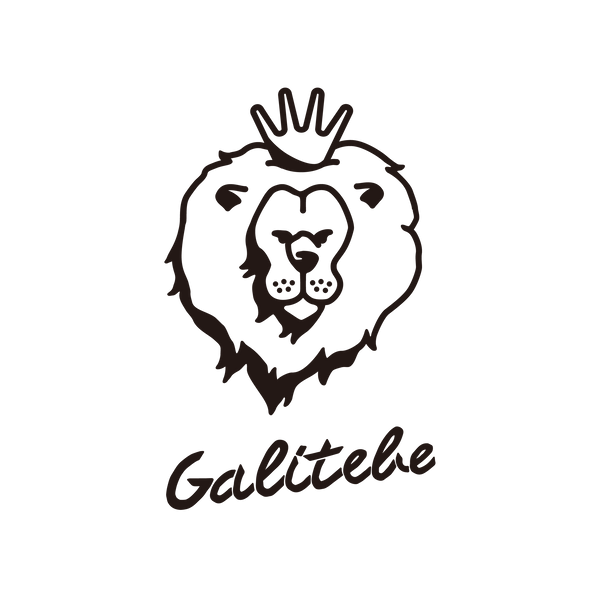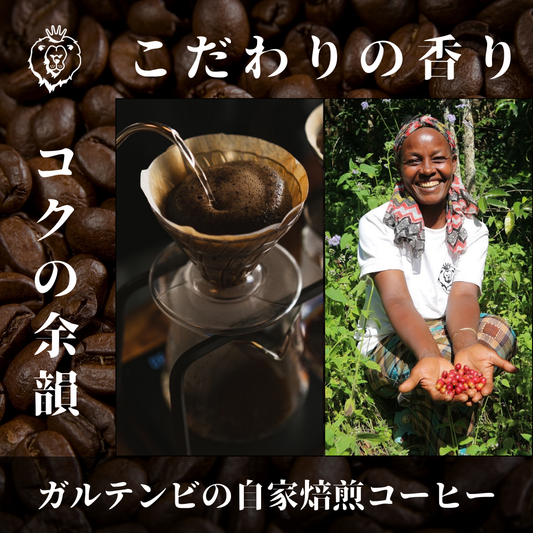
Galitebe handles two Ethiopian green coffee bean producers.
Today, I would like to talk about one of them, the story with Habutam and the raw beans we handle.
Galitebe Co., Ltd.
→I want to meet an ethnic minority somewhere in the world, and if I write down everything and draw a lottery, I will win an ethnic minority in Ethiopia.
After making a surprise visit alone, he was fascinated by Ethiopia and decided to do business with it.
Currently, we deal directly with local producers of raw coffee beans and sell them in Japan.
→I want to meet an ethnic minority somewhere in the world, and if I write down everything and draw a lottery, I will win an ethnic minority in Ethiopia.
After making a surprise visit alone, he was fascinated by Ethiopia and decided to do business with it.
Currently, we deal directly with local producers of raw coffee beans and sell them in Japan.
Check out the article here for another producer, Denkaram.
https://galitebecoffee.com/blogs/uragawa/2022-5-4-meetdenkalem
https://galitebecoffee.com/blogs/uragawa/2022-5-4-meetdenkalem
table of contents
・I got a call from Habtam.
・ I actually met in Ethiopia
・About the variety of green coffee beans we handle
・Transactions with peaks and valleys
·summary
・ I actually met in Ethiopia
・About the variety of green coffee beans we handle
・Transactions with peaks and valleys
·summary
・I got a call from Habtam.
About a year has passed since we started trading with Denkaram.
At that time, I was in Japan and received multiple calls.
At that time, I was in Japan and received multiple calls.
"I want you to handle my own green coffee beans"
Because the transaction with Denkaram is directly negotiated, the price is better than the market price, and it is exported without being mixed with other green beans.
Conversely, if it is not, it is a market price transaction, so sometimes the selling price is high and sometimes it is low.
It is then mixed with other green beans and exported under the name "Ethiopian Mocha".
Or it will be sold to the domestic market at a low price in a lower grade condition.
Conversely, if it is not, it is a market price transaction, so sometimes the selling price is high and sometimes it is low.
It is then mixed with other green beans and exported under the name "Ethiopian Mocha".
Or it will be sold to the domestic market at a low price in a lower grade condition.

For producers of raw coffee beans, it is painful both financially and rewarding.
One of the producers who contacted me is Habtam.
"For now, let's meet when we go to Ethiopia next time."
・ I actually met in Ethiopia
At Galitebe, we decide whether to trade based on personality rather than quality or price.
From there, we will improve the quality and trade at a price that both parties can agree on.
From there, we will improve the quality and trade at a price that both parties can agree on.

I remember eating injera together at a local restaurant, no, a cafeteria, when I first met Hubtam.
While I was eating injera, many of Habtam's friends passed by and seemed to be busy chatting like, "Hey! How are you?"
"There is a countryside", isn't it?
"There is a countryside", isn't it?

What is Injera
→ The staple food of Ethiopia. A sour crepe made from fermented teff (corn-like grain). Eat vegetables and meat with your hands.
And Habtum didn't have a smartphone, he didn't even have an email address, let alone a social network.
All communication is over the phone or in person.
All communication is over the phone or in person.
He always wears a checked shirt and picks me up in a truck.

I'm a warm person.
When I interacted with the employees, I frankly felt that they had a family-like atmosphere.

When I went to the refinery, one of the employees was good at English, so we talked about various things.
Listening to the tone of his talk, I can tell that he finds this job rewarding.
As if it were his pride, he showed me around the coffee forests and refineries.

Needless to say, I decided to make a deal with Habtam.
・About the variety of green coffee beans we handle
In the Habtam Forest, there was a progenitor with a mixture of various varieties, and only two varieties, 74110 and 74112.

Most of the varieties harvested in Ethiopia are "progenitor".
Progenitor is a mixture of various varieties, not planted, but originally in the place.
There are many varieties in Ethiopia that don't even have names.
There are many varieties in Ethiopia that don't even have names.

It took me so long to figure out what 74110 and 74112 were when I heard about them at Habtum's refinery back then.
The nuance that I understood was that "we planted varieties that are resistant to the environment from a place like an agricultural cooperative".
And what is the difference between 74110 and 74112?
Why are we growing together?
Why are we growing together?
I had a question and he explained it to me.

The obvious difference is the length of the branches .
Other than that it seems the same.
That's why we're growing together.
That's why we're growing together.
Now that I think about it, it's a very simple thing, but I had a hard time understanding it because it was a mixture of technical English words. .
Habtum Refinery's favorites are 74110 and 74112.
"Let's make this a grade 1 or higher quality!" and started trading.
・Transactions with peaks and valleys
In order to import Habtam's green coffee beans, we have pre-ordered sales at Kurafan (crowdfunding) in Japan.
Thanks to you, I was able to purchase 2 tons of raw beans from Habtam.
It was the first export for Habtam, and it was tumultuous.
Each step took a long time.
For example, procurement of original hemp bags.
Habtum has no idea where to buy the burlap sacks and print the logo design.
Habtum has no idea where to buy the burlap sacks and print the logo design.
After a few months delay, the raw beans finally arrived.
However, the raw beans were mixed with "missing beans".

In Ethiopia, chipped beans are recognized as “drinkable”.
I drank the coffee, which was actually roasted without removing the chipped beans, and there was no problem.
Anyway, it was really delicious.
However, under Japanese standards, beans that do not look good are recognized as "bad beans."
I wonder if there is such a cultural friction.
I was full of shock and apologies.
I was full of shock and apologies.
Even so, Habtam's raw beans were very popular and sold out in just half a year.

The second import traded 9 tons.
On June 8, 2022, it is currently on sale.
It's a 9-ton hemp sack, but there's another problem. .

Since Habtam traded 4.5 tons each of Natural (Sun dry) and Washed, it is impossible to know which beans are in the burlap sack.
This jute bag has "Natural" written on the front and "Washed" written on the back.
At least you can tell the difference between the numbers "0002" and "0003". .

There is no end to the problem from diagonally behind lol
The taste is very good every time.
·summary
When I do business with Habtam, I feel a strong sense of “local Ethiopia”.
"The feeling of doing business with Ethiopia" is amazing lol
At the same time, there is also a feeling that we are growing together step by step.
This is what makes it fun and interesting to continuously do business with the same producer.

I would like to purchase as many raw beans as possible from Habtam next year.
We can still afford raw beans in stock!
If you haven't tried it yet, please give it a try.
Enjoy the “local Ethiopia”.
Enjoy the “local Ethiopia”.
habtum roasted beans
https://galitebecoffee.com/products/habtamu2set
https://galitebecoffee.com/products/habtamu2set






